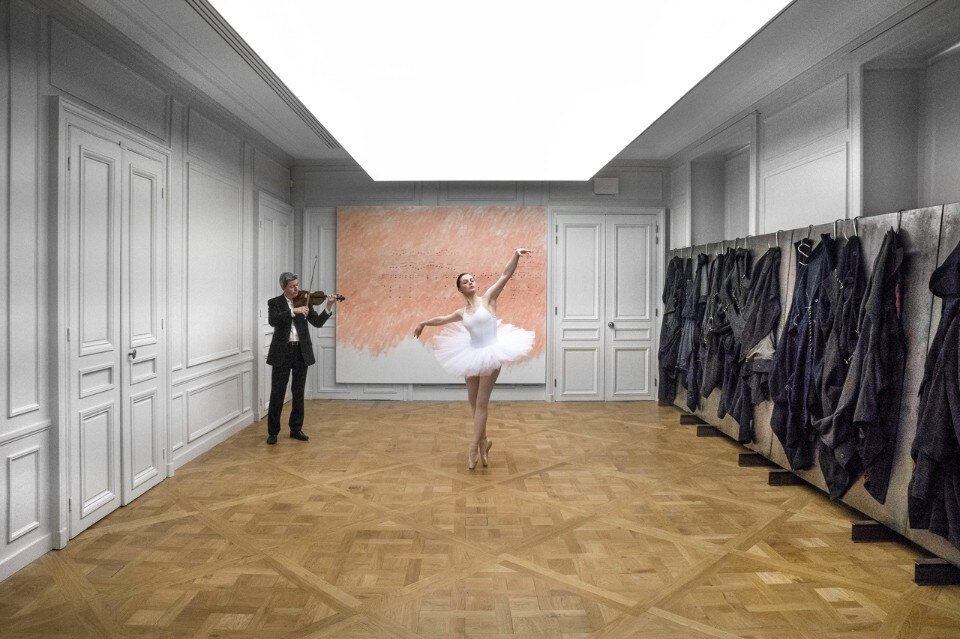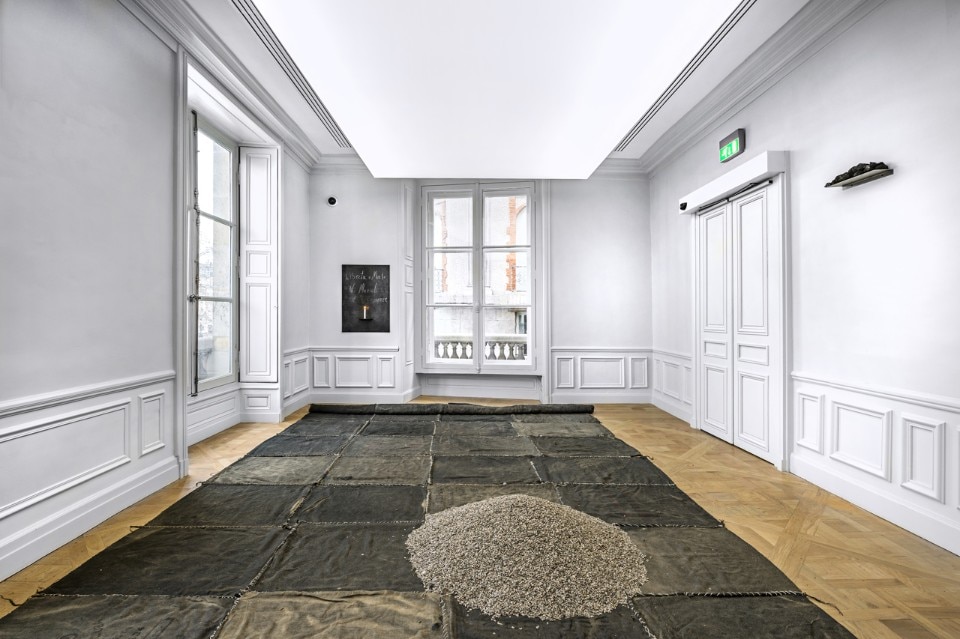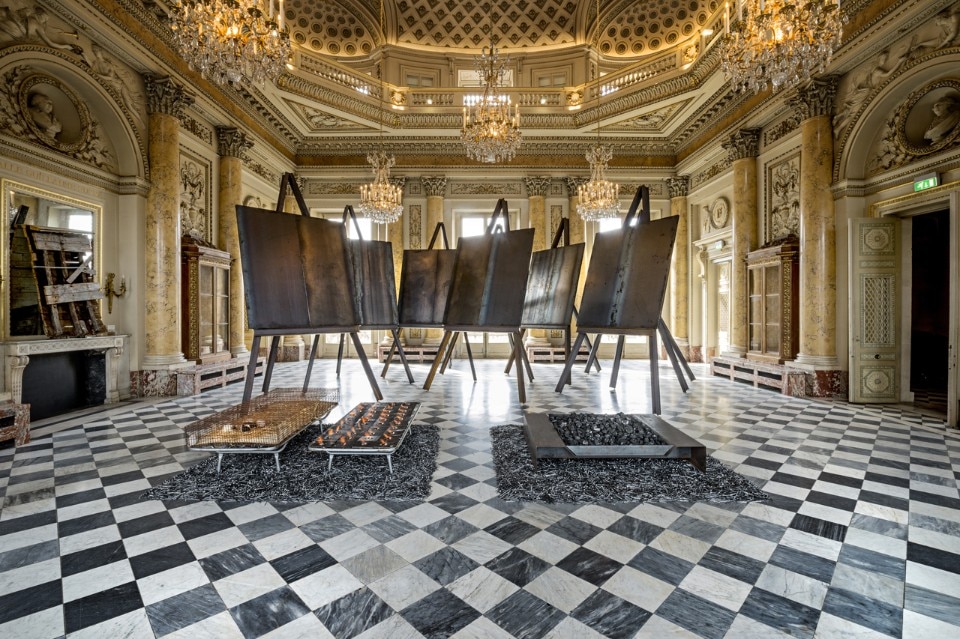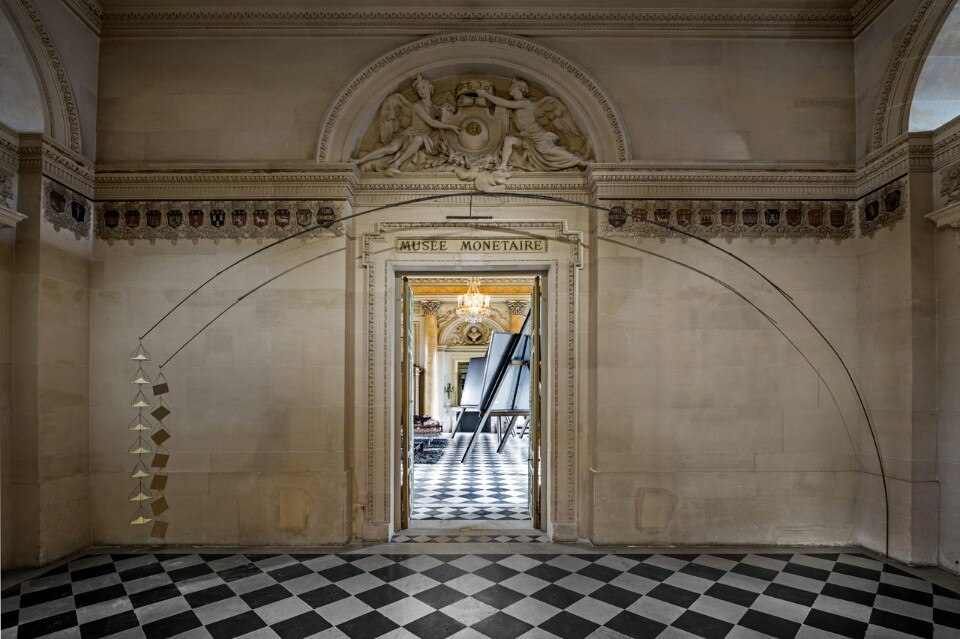
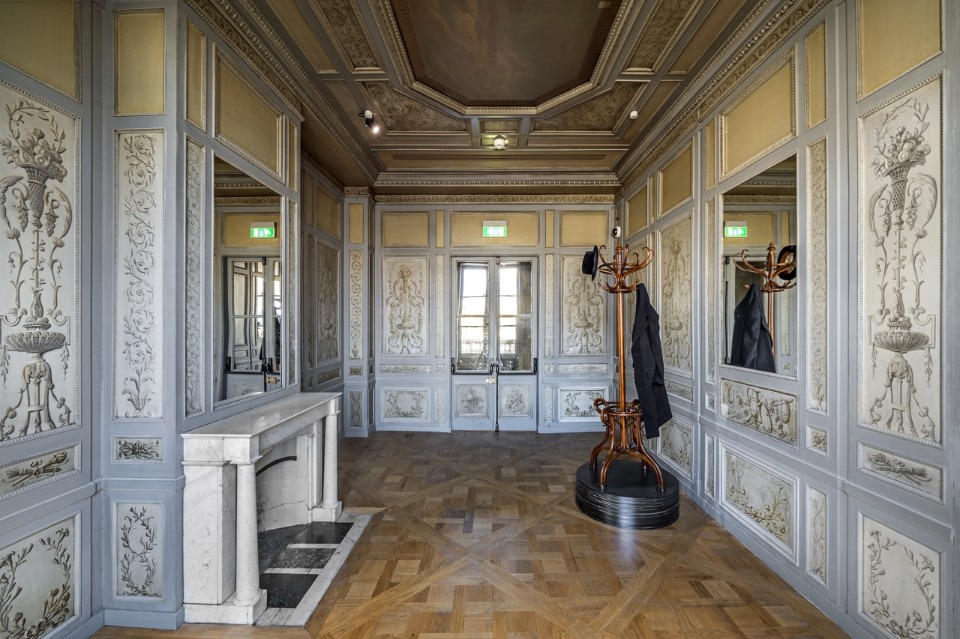
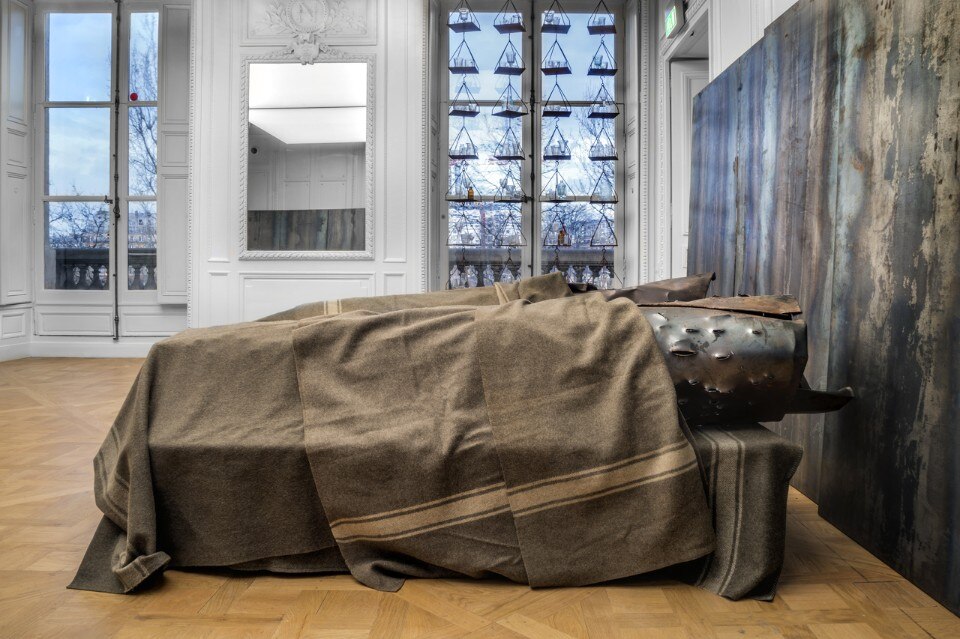
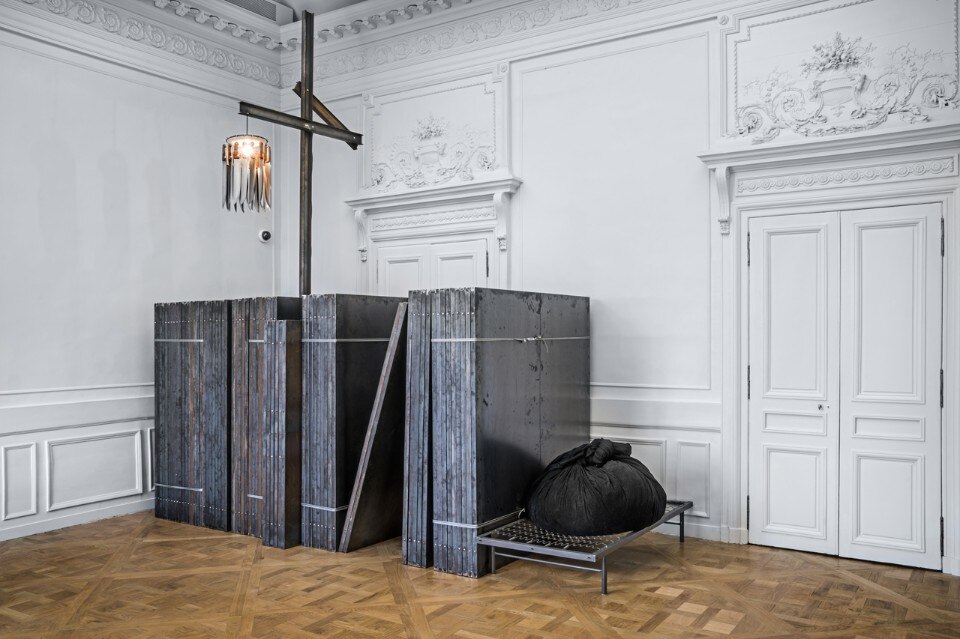
So, we have the magic of an installation that, at times, seems straight out of a Tiepolo painting. There is all the drama of the Kounellis fire and the lacerated and rolled sheet metal but also his ability to recreate the tension of surprising works such as the Senza Titolo (Da Inventare sul Posto) of 1972 presented at the Attico gallery in Rome and then reactivated in Harald Szeemann’s Documenta 5. The canvas with the score from Stravinsky’s Pulcinella and his Twombly-like rose is re-proposed with the live performance of a musician and ballerina. In Kounellis’ career, this marked an even stronger detachment from classical materials and, if you think about it, was truly ahead of its times.
The same relation to Philippe Parreno’s use of Petrushka is found in the material drift which has fostered so much relational art in more recent years.
